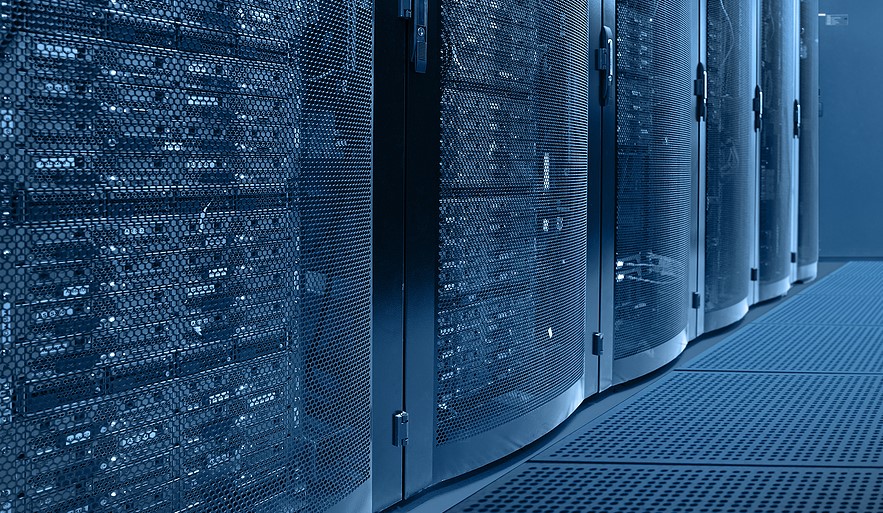News
Spotlight On: Data Centres & Their Water Footprint
Technology is the driving force behind life in the 21st century and there can certainly be no denying the fact that it is incredibly beneficial in all sorts of ways, but as the impacts of climate change are felt increasingly day by day, now is perhaps the perfect time to ask… at what environmental cost?
As the internet becomes ever more prevalent and as we move increasingly towards cloud-based operations, with everything connected via the Internet of Things, data centres will become more and more essential to ensure everything keeps ticking over as it should.
These centres are simply buildings (or clusters of buildings) that house computer systems, servers and other tech components like storage systems, telecommunications, backup options to cover systems failures, security facilities and so on. Without them, we wouldn’t have the online lifestyle we’ve come to know and love.
However, as essential as these sites are, it’s now impossible to ignore the impact that they have on the environment, particularly where the water crisis is concerned.
Technology’s global water footprint is significant, with huge amounts of water required to help keep big data centres cool. These cooling systems include the use of cooling towers, pumps, chillers, heat exchangers and condensers, piping, air conditioning units and humidification systems, all of which require lots of water.
Resources are also used up through electricity generation – and given that the tech sector is expected to grow exponentially over the next few years, with 29.3 billion devices due to be online by 2030, these problems only look set to grow as time goes on.
Looking at the figures as they currently stand, Google was found to use more than four billion gallons of water across its global data centres in 2021, with an investigation by US news source The Oregonian revealing that data centres in The Dalles in Oregon had nearly tripled their water usage within five years.
And the search giant reportedly has plans in place to build two more data centres in the city.
Data centre growth
Figures from CBRE show that new developments are consistently taking place across North America, Europe, Latin America and Asia-Pacific, with northern Virginia still at the top of the global data centre market, supporting 2,132 megawatts of total inventory.
Furthermore, the rapid growth of artificial intelligence, coupled with other tech innovations like self-driving cars, gaming and streaming, is predicted to continue to drive strong demand for data centres.
What is interesting to note, however, is that many data centres are set up in regions that are already under water stress. Research from Virginia Tech, for example, indicates that one-fifth of data centres take their water from watersheds that are already facing moderate to high water stress levels, the majority of which are in the western US.
The reason for this is because the drier hotter climates in these places increase the availability of solar and wind energy, but it will become increasingly important to factor in water availability as well when building data centres to ensure that additional stress isn’t placed on water-starved areas, especially when you take climate-driven drought risk and reduced rainfall into account.
How can data centres reduce their water footprint?
The good news is that all is not lost (yet) and there is a lot that can be done to help data centres reduce their water usage and consumption.
Google, for example, recently made a climate-conscious pledge to address the issue across its sites and, to that end, it has been working on new cooling technologies to significantly reduce water usage – although these solutions are still under investigation and only in the early stages of trials.
Elsewhere, Microsoft recently vowed to become water positive by the year 2030, building water usage and consumption into its business strategy… and a recent report from Morningstar Sustainalytics has revealed just how successful this has proven, with the tech giant seemingly far better at water management than other data centre firms.
In fact, Microsoft was the only company in the review that received top scores for water risk management and water management programmes, with water intensity also displaying a significant drop compared to the three-year average.
However, the firm has also drawn criticism for its water consumption at its site in Hollands-Kroon in Holland during 2021, when drought conditions led to severe water shortages, so there’s certainly still room for much improvement across the board.
Interestingly, tech groups may find that their hand is forced by the utility companies themselves, with Thames Water now considering bringing in measures to reduce their data centre water usage, such as by charging more during peak periods or fitting flow restrictors.
Speaking to The Register, John Hernon – Thames Water’s strategic development manager – explained that such steps are necessary in order to reduce pressure on the network when demand increases, such as during hot weather.
The hope is that data centres will be encouraged to consider all alternatives for water resources, whether that’s by reusing final effluent or intercepting surface water before it reaches the treatment works.
Other potential options include recycling process water, rainwater harvesting, abstracting water from local boreholes, using seawater for cooling processes, or investigating the possibilities of technology such as immersion cooling, where servers are immersed in dielectric liquid.
Regardless of which alternative solutions are invested in, given that demand for freshwater is now predicted by the UN to exceed supply by 40 per cent inside the next ten years, driven by population growth, climate change, water mismanagement, pollution and increased urbanisation, the window of opportunity for addressing the situation gets smaller day by day.
